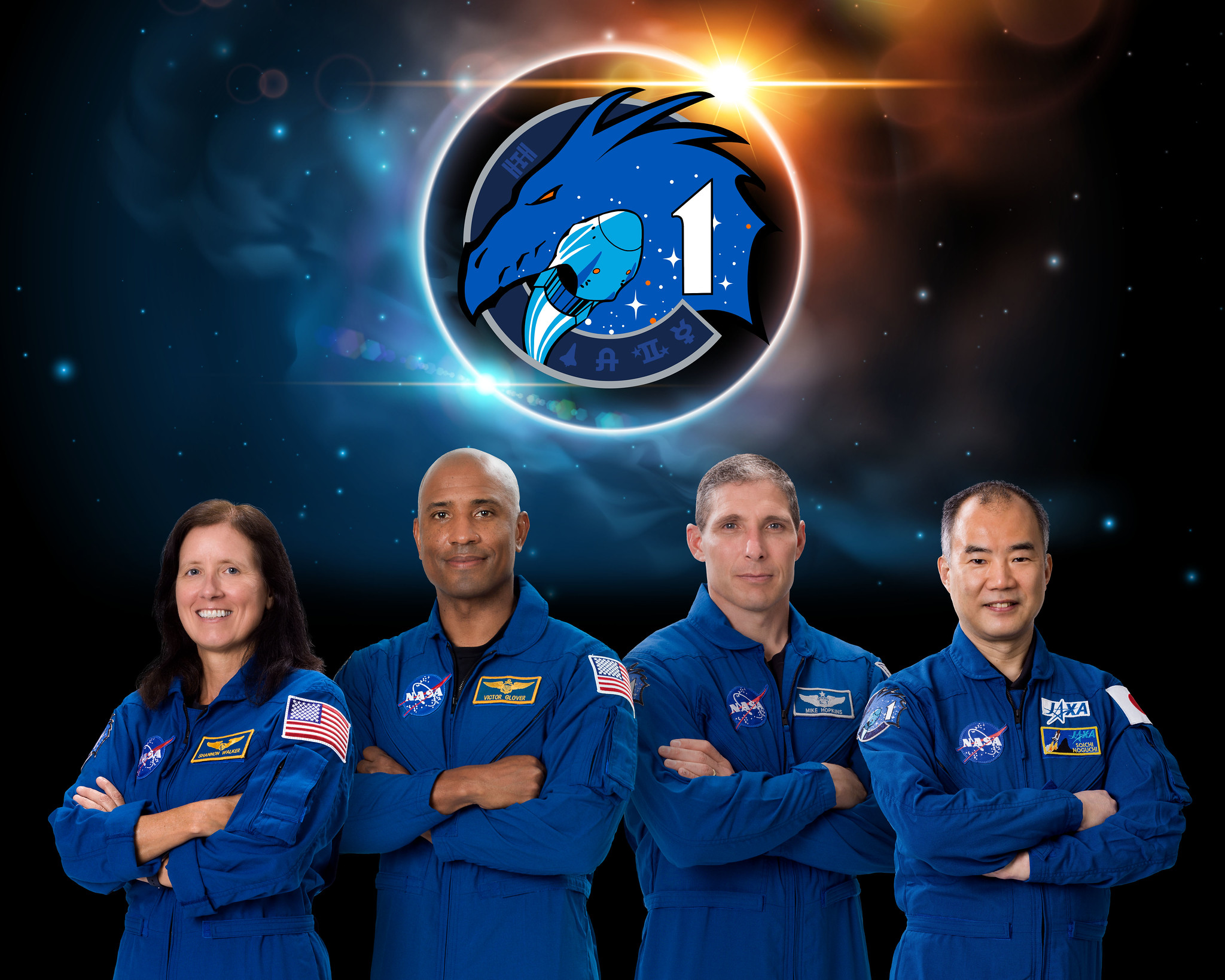
SpaceX's next astronaut launch for NASA won't fly on Halloween after all.
The upcoming Crew-1 mission, which will send four astronauts to the International Space Station, had been scheduled to lift off atop a SpaceX Falcon 9 rocket on Oct. 31. But the launch will now occur no sooner than early to mid-November, NASA officials announced today (Oct. 10).
The delay will provide "additional time for SpaceX to complete hardware testing and data reviews as the company evaluates off-nominal behavior of Falcon 9 first stage engine gas generators observed during a recent non-NASA mission launch attempt," NASA officials wrote in an update today.
Related: SpaceX's historic Demo-2 crewed test flight in photos
That recent attempt was presumably the attempted liftoff of the GPS III SV04 satellite for the U.S. Space Force, which was aborted on Oct. 2 with just two seconds left on the countdown clock. The abort was caused by an "unexpected pressure rise in the turbomachinery gas generator" in the Falcon 9's first stage, SpaceX founder and CEO Elon Musk explained via Twitter on that same day.
Crew-1 will use a different Falcon 9, of course, but NASA wants to make sure that all possible issues with the rocket are fully understood before putting astronauts atop it again.
SpaceX has one crewed mission under its belt. On May 30, a Falcon 9 launched a Crew Dragon capsule carrying NASA astronauts Doug Hurley and Bob Behnken toward the space station on a test flight known as Demo-2. Everything went well with the mission, and Hurley and Behnken splashed down safely in early August.
Get the Space.com Newsletter
Breaking space news, the latest updates on rocket launches, skywatching events and more!
Demo-2 cleared the path for Crew-1, the first of at least six operational crewed missions SpaceX will fly to the orbiting lab for NASA under a $2.6 billion deal signed in September 2014. Crew-1 will send NASA astronauts Michael Hopkins, Victor Glover and Shannon Walker and Japanese spaceflyer Soichi Noguchi to the station for a six-month stay.
Crew-1's planned launch has been pushed back multiple times. The first tentative target date was Aug. 30, which then shifted to late September, then Oct. 23, then Oct. 31 and now early to mid-November. Some of the delays have been logistical, intended to avoid traffic jams aboard the station.
SpaceX isn't the only company that holds a NASA commercial crew contract. Boeing signed a $4.2 billion deal in September 2014, which it will fulfill using a capsule called CST-100 Starliner.
Starliner isn't ready to carry astronauts yet, however; the capsule must first refly an uncrewed test mission to the station, after failing to meet up with the orbiting lab as planned during its first attempt in December 2019.
Mike Wall is the author of "Out There" (Grand Central Publishing, 2018; illustrated by Karl Tate), a book about the search for alien life. Follow him on Twitter @michaeldwall. Follow us on Twitter @Spacedotcom or Facebook.
Join our Space Forums to keep talking space on the latest missions, night sky and more! And if you have a news tip, correction or comment, let us know at: community@space.com.

Michael Wall is a Senior Space Writer with Space.com and joined the team in 2010. He primarily covers exoplanets, spaceflight and military space, but has been known to dabble in the space art beat. His book about the search for alien life, "Out There," was published on Nov. 13, 2018. Before becoming a science writer, Michael worked as a herpetologist and wildlife biologist. He has a Ph.D. in evolutionary biology from the University of Sydney, Australia, a bachelor's degree from the University of Arizona, and a graduate certificate in science writing from the University of California, Santa Cruz. To find out what his latest project is, you can follow Michael on Twitter.
-
Old Space nut Good. It was NOT taking the time to follow up issues that caused the Challenger and Columbia disasters.Reply -
Eva Braun The Crew Dragon launch at the end of March marks the first manned flight in nine years from the United States on a locally made spacecraft. Prior to that, the astronauts were delivered to the ISS by Russian Soyuz.Reply









